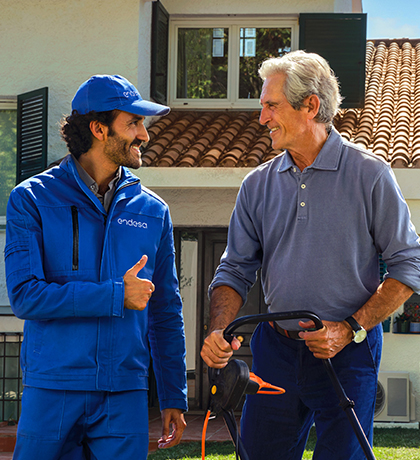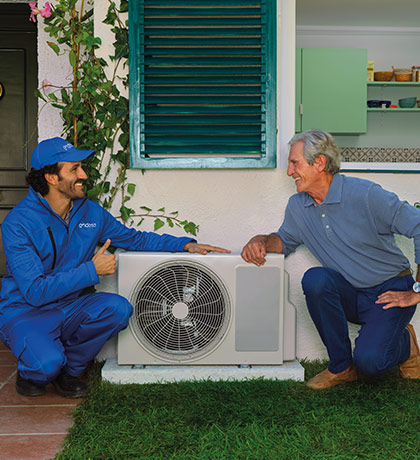If you prefer to always view the website in English, please click here.
Illustrated history of the thermostat
400 years ago, humans began to feel the need for a device that could control the temperature. The aim was to have an easier life, letting technology take care of this essential task. The result was the thermostat, which is found in furnaces, air conditioners, refrigerators, cars, etc.
400 years ago, humans began to feel the need for a device that could control the temperature. The aim was to have an easier life, letting technology take care of this essential task. The result was the thermostat, which is found in furnaces, air conditioners, refrigerators, cars, etc.
What temperatures can we withstand? Although there are many factors to take into account (such as the duration of exposure, the clothes worn, the humidity and wind levels), in general it can be stated that death is guaranteed above 60ºC and below -70ºC.
These temperatures are extreme, but they aren’t science fiction: in environments that are not exactly pleasant, such as the Mponeng gold mine (South Africa) temperatures of +65ºC can be reached, and in cities in Siberia (such as Oymyakon) the thermostat can descend to as low as -67ºC. In both cases, people survive thanks to refrigeration or heating systems.
The human being has always designed solutions to endure extreme temperatures. Inside an Arctic igloo, for example, it is 20 degrees warmer than outside. Still, they rarely get warmer than 7ºC, even with a fire lit inside (the cold outside prevents the ice from melting).
However, if we’re talking about a scientific approach to temperature, the essential invention is the thermostat.
Brief history of the thermostat
It was around 1620, when the Dutch inventor Cornelius Drebbel (the creator of the first submarine in history) invented an oven to incubate eggs whose temperature was controlled by a mercury thermostat and an air intake that allowed larger or smaller quantities of hot air to pass through. It is considered to be the origin of the thermostat.
In 1830, Andrew Ure a Scotsman, invented what today we refer to as a thermostat with a view to keeping steam boilers warm.
A few decades later, in 1880, a Professor from Wisconsin named Warren Johnson became truly obsessed with regulating the temperature of the classrooms in which he taught. His obsession led him to create the electrical thermostat, a device to control the room temperature inside buildings.
Shortly afterwards, in 1883, Albert Butz patented the first temperature regulator for ovens and a pioneering system called the damper flapper, which automatically regulated the air intake of coal furnaces in order to raise or lower the temperature. His invention was the origin of modern automatic temperature control systems.
In 1906, a young engineer named Mark Honeywell purchased Butz’s patent and developed the first programmable thermostat, which incorporated a clock that allowed for the pre-setting of the temperature for the following morning. Later, in 1934, came the thermostat including an electric clock. Dial thermostats first appeared in the 1950's, and have survived to the present day.
The 1980’s featured the emergence of the first thermostats with digital displays, electronic circuits and many functions such as programming in terms of the time and the day of the week. Thermostats would continue to evolve during the 1990’s and 2000’s, expanding their functions, until the development of a new generation of smart thermostats connected to the internet.
How do thermostats work?
The thermostat is a monitor that heats and/or cools spaces in terms of their temperature. It is found in heating and air conditioning systems, and also in refrigerators and car cooling systems. It is used to measure temperature and react accordingly. Its objective will always be the same as that of any human being: to keep heat (or cold) within certain limits.
The most common example, and the one that probably affects you most, is when the temperature of your house is below the limit that you've set (for example: 18ºC), and the thermostat orders the boiler to operate.
It works in the same way with air conditioning: if the temperature exceeds the limit that you've selected (for example: 25ºC), the thermostat sees to it that the temperature falls. In both cases, when the thermostat records a temperature within a desired range, it orders the heating/cooling process to be stopped or reduced.
Type of thermostat
There are two types of thermostats:
- Mechanical: they use physical mechanisms to measure the air temperature in order to activate the processes that change it. To do so, they use sensors in forms that range from bimetallic strips, wax balls and bulbs filled with gas to air tubes. These sensors react to the temperature changes through their expansion or contraction, activating the changes that raise or lower the heating or cooling levels.
- Digital: currently, these are the most commonly used thermostats. They use electronic sensors to control the variations in the environment. They are programmable and allow the user to set a series of selected temperatures. Their sensors record the temperature and make the necessary changes to regulate it by turning the heating or cooling on or off.
Stable temperature and savings
Your home’s thermostat is in charge of the heating, always reacting to your needs, but it can't protect you from two types of shock: the boiler may break down and leave you in the cold, or there may be a gas bill that is much higher up than you expected.
For the first, you need a maintenance service that serves you 24 hours per day, 365 days per year, and that shows up at your house at the slightest incident. Each time they come to your house, they should perform an obligatory check of the boiler.
For the second situation, what you need is a rate with a stable price and that is one of the lowest in Spain.
“The thermostat controls your home’s heat, but what guarantees it is a 24-hour maintenance service”
{{content.phone.title}}
{{content.phone.text}}
{{content.phone.phoneText}}
{{content.form.title}}
{{content.form.text}}
{{content.form.success.title}}
Take a minute to find the product that best suits you:
{{firstStep.title}}
Take a minute to find the product that best suits you:
{{title}}
{{content.phone.title}}
{{content.phone.text}}
{{content.phone.phoneText}}
{{content.form.title}}
{{content.form.text}}
{{content.form.success.title}}
You don't need to adapt to Endesa's tariffs because they adapt to you. If you go to our catalogue you can compare the different tariffs for yourself. Or if you prefer, you can answer a few questions and we will take care of comparing all the different electricity and gas tariffs and then make a customised recommendation.
Take a minute to find the product that best suits you:
{{title}}
{{content.phone.title}}
{{content.phone.text}}
{{content.phone.phoneText}}
{{content.form.title}}
{{content.form.text}}
{{content.form.success.title}}
You don't need to adapt to Endesa's tariffs because they adapt to you. If you go to our catalogue you can compare the different tariffs for yourself. Or if you prefer, you can answer a few questions and we will take care of comparing all the different electricity and gas tariffs and then make a customised recommendation.
Comparison of Electricity and Gas Tariffs
You don't need to adapt to Endesa's tariffs because they adapt to you. If you go to our catalogue you can compare the different tariffs for yourself. Or if you prefer, you can answer a few questions and we will take care of comparing all the different electricity and gas tariffs and then make a customised recommendation.
Spend a minute to find the product which best adapts to you:
{{firstStep.title}}
Spend a minute to find the product which best adapts to you:
{{title}}
Spend a minute to find the product which best adapts to you:



